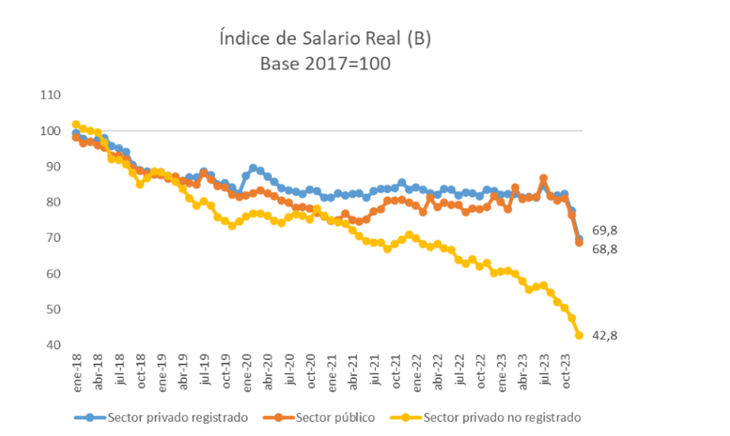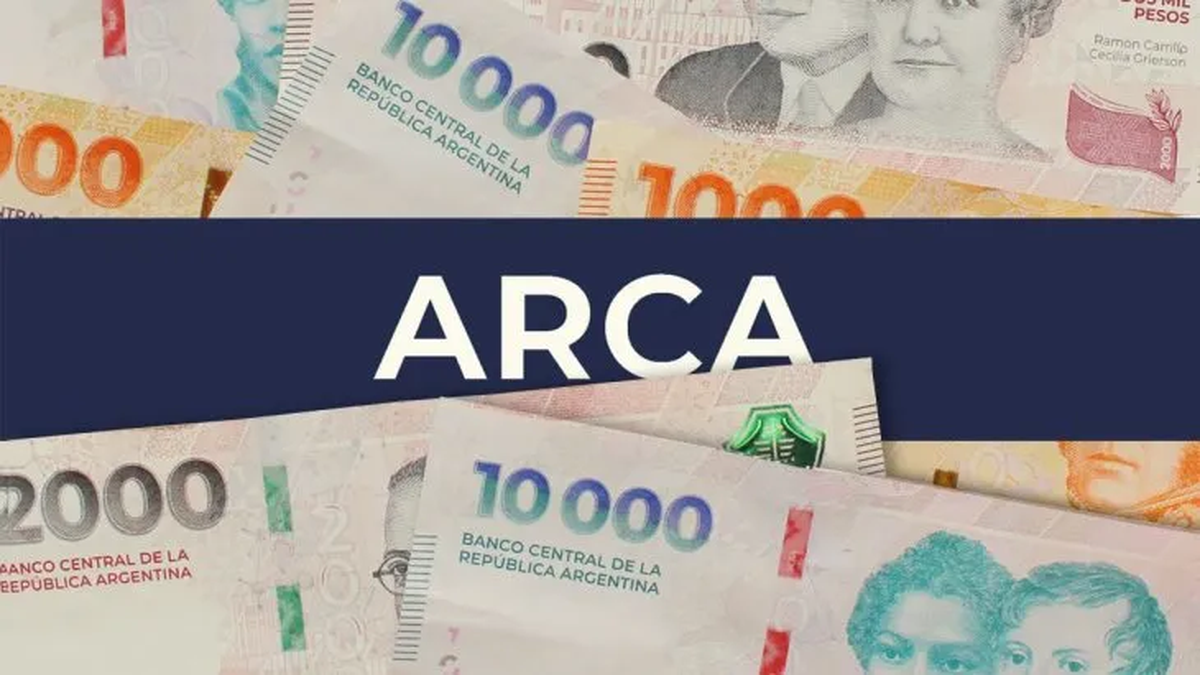In the last 72 months, Argentina had a monthly average inflation of 5%. In the last year, average inflation was 10%. This high inflation destroyed the purchasing power of the salary of formal and informal workers. An analysis prepared by the IARAF (Argentine Institute of Fiscal Analysis) attempted to explain, based on hypothetical projections, how many salaries were lost since 2017 due to parities equal to or below the CPI.
Given that the latest data available from INDEC corresponds to salaries for the month of October 2023, this analysis assumes two alternative cases for the last two months of the year. He case A considers that all workers received November and December an increase in salaries equal to inflation. He case Bfor its part, considers that the workers received a nominal increase in wages equal to half of inflation.
Case A: the situation of workers who received increases in November and December salaries equal to inflation
In the year 2023, the formal private workers They ended up losing 17.8% of their purchasing power in 2017, public workers 18.4% and informal workers 44.4%. Compared to the year 2022, formal private ones lost 1%, public ones gained 3% and informal ones lost 15%.
In the 72 months between January 2018 and December 2023, thes formal private workers they lost the equivalent of 10.4 salaries, the public at 12.4 salaries (more than one year of income) and informal workers at 19.0 salaries. This means that, although formal private workers earned 72 salaries, compared to 2017 it was equivalent to earning 62 salaries (an average loss of 14.4%). In the case of the public it was like receiving 60 monthly salaries from 2017. And finally, in the case of informal workers, it was equivalent to 53 salaries from 2017.
realsalary.PNG
Case B: the situation of workers who in November and December received salary increases equal to half of inflation
In the case of formal workers who in the months of November and December received nominal increases equal to half of inflation, they ended the year with a loss of purchasing power of 30% compared to the average for 2017. And the loss of informal workers may have reached 57%.
Throughout the year 2023, these formal private workers ended up losing 19.2% of purchasing power in 2017, public workers 19.9% and informal workers 45.3%. Compared to the year 2022, formal private ones lost 2.6%, public ones gained 1.2% and informal ones lost 16%.
In the 72 months that elapsed between January 2018 and December 2023, formal private workers lost the equivalent of 10.5 salaries, public workers lost 12.6 salaries (more than a year of income) and informal workers lost 19.1. salaries. This means that, although formal private workers earned 72 salaries, compared to 2017 it was equivalent to earning 62 salaries (an average loss of 14.4%). In the case of the public it was like receiving 60 monthly salaries in 2017. And, finally, in the case of informal workers, it was equivalent to 53 salaries from 2017.
salaries4.PNG

Salaries: what is expected for 2024
According to Nadin Argañaraz, the author of the document, in the best of cases, formal private workers ended the year 2023 losing a 17.8% of 2017 purchasing powerpublic workers losing 18.4% and informal workers 44.4%.
For workers who have managed to collect half of the November and December inflation, the final situation of 2023 is much more complex. A formal worker ended the year with a purchasing power of 30% lower than the monthly average of 2017. And an informal one with purchasing power 57% lower than the monthly average of 2017.
The central question now is the recovery or not of what has been lost in the last two months of 2023. If a worker who received half of the inflation in those two months, from now on only receives nominal increases equal to the inflation of 2024, he will be left with a significant loss of purchasing power from now on. . Specifically, a formal private worker would be left with 30% less purchasing power than what they had in 2017.
The salary discussions will be key in these months, with workers seeking to compensate for what they have lost in 2023 and not lose again in 2024, in a context of drop in economic activity. In the public sector there will be a real drop in tax revenue, which will lead many administrations to limit salary increases to nominal increases in income, regardless of the level the inflation rate reaches.
Source: Ambito




